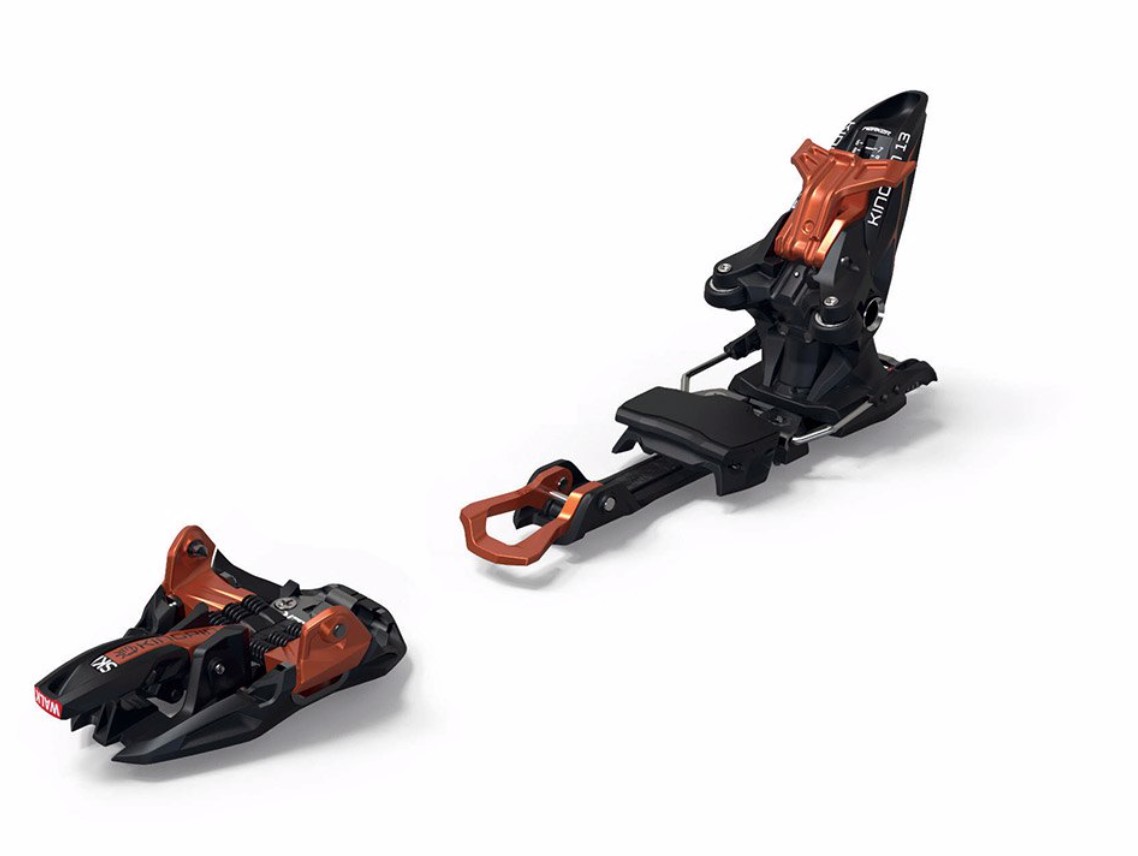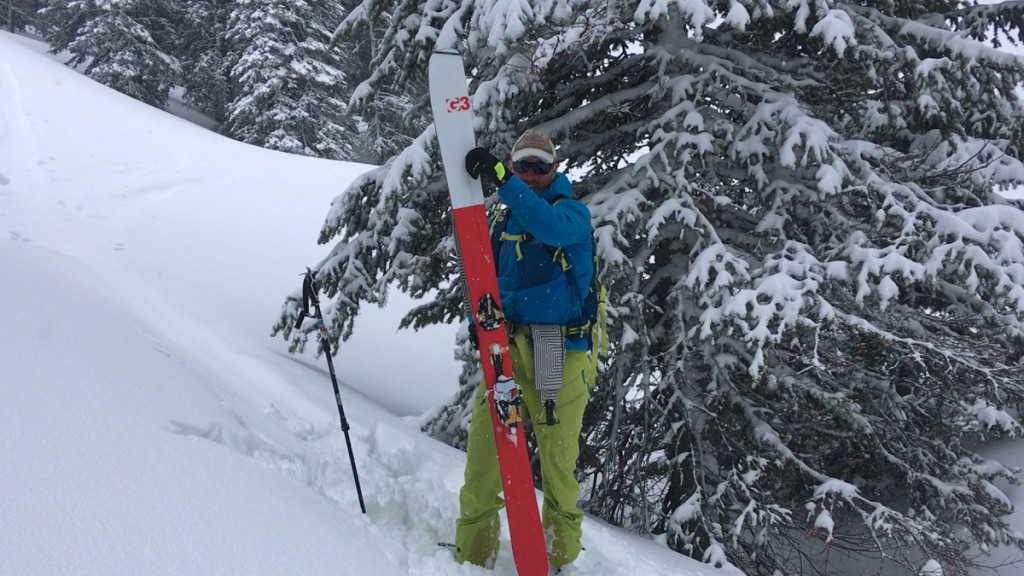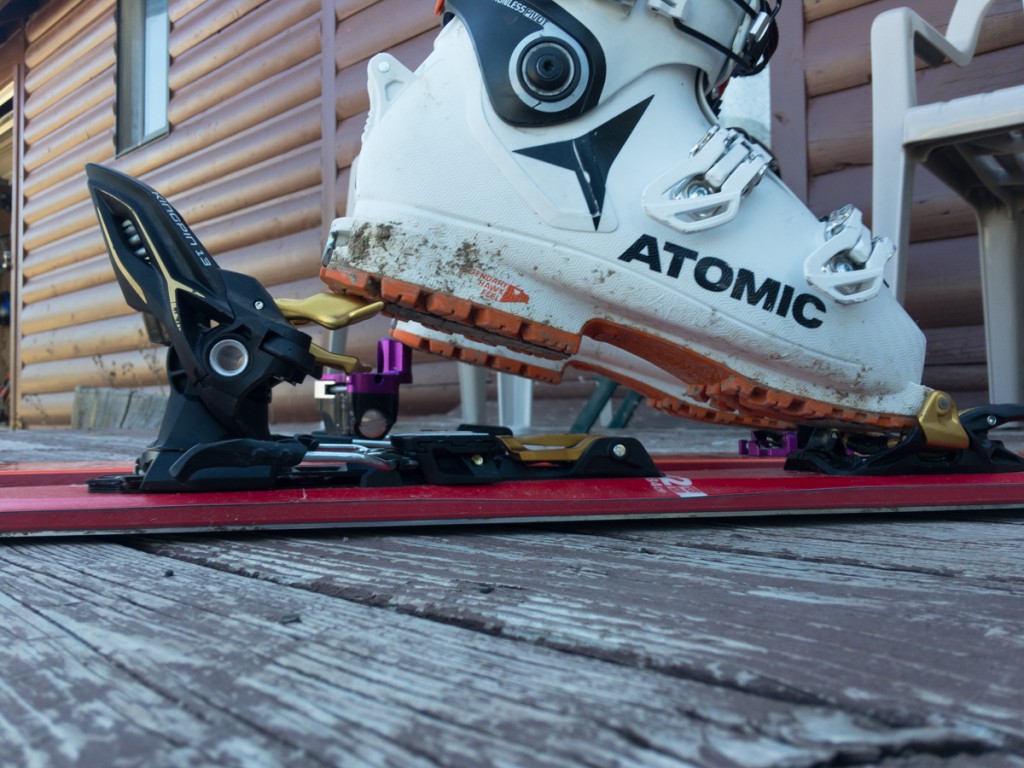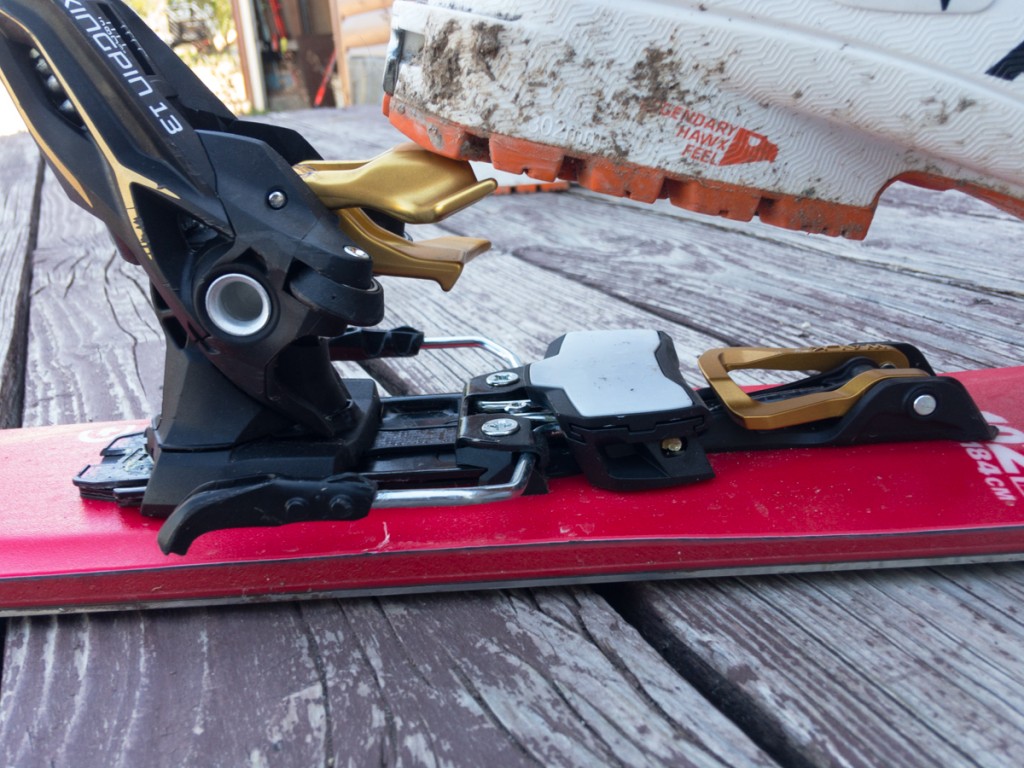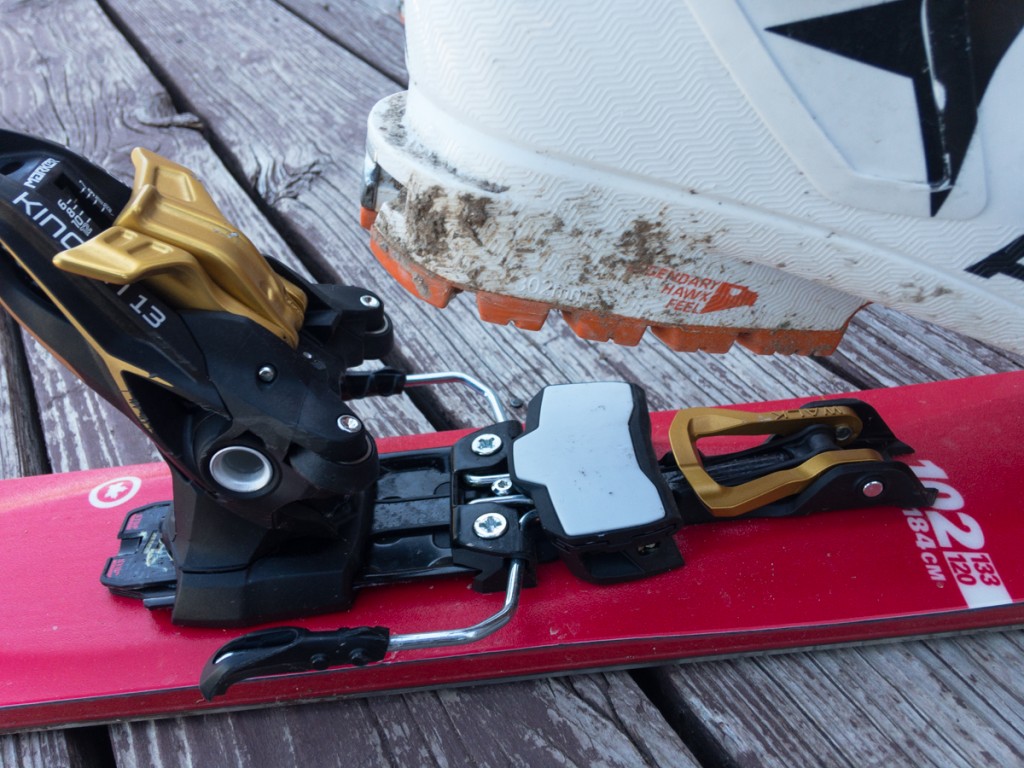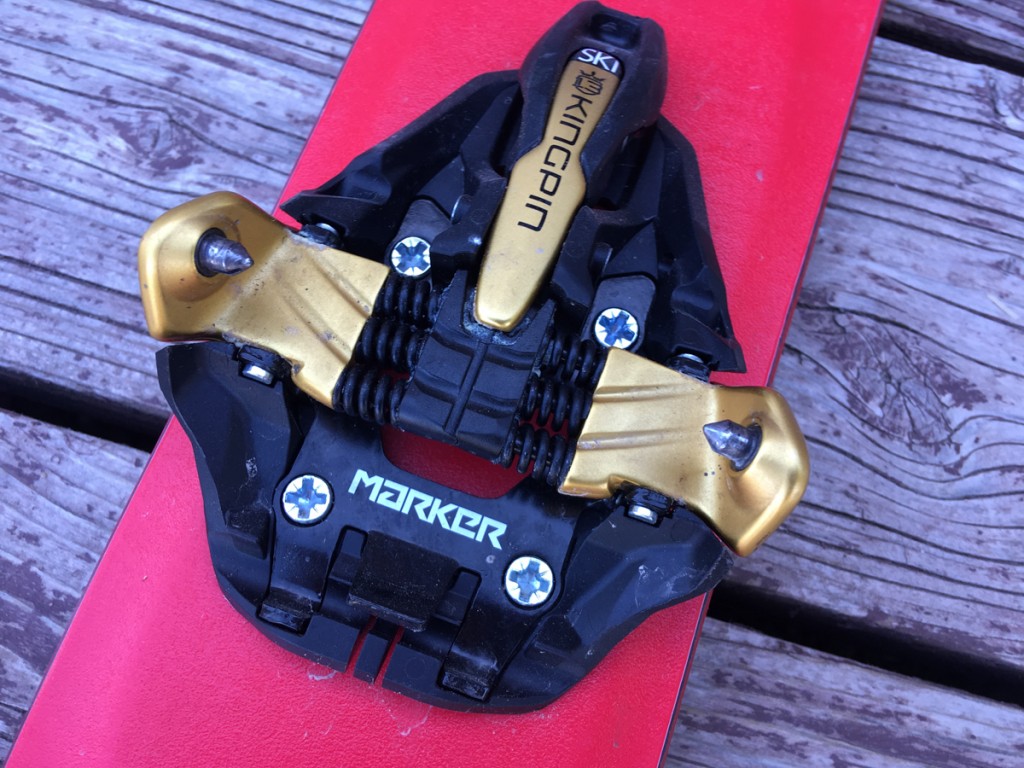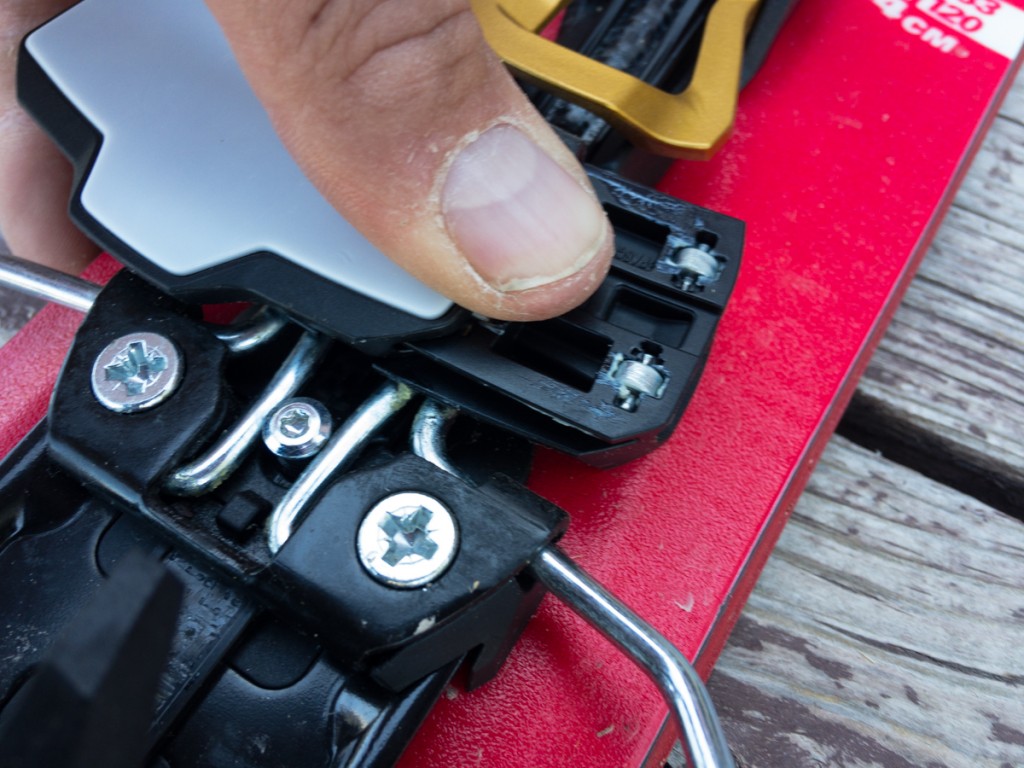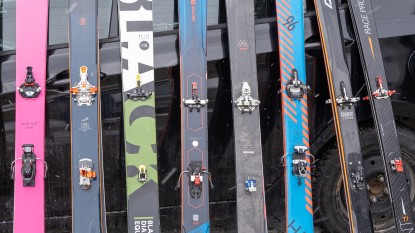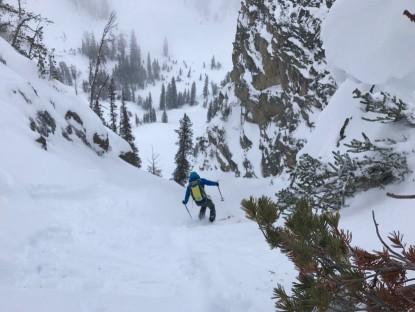The Marker Kingpin 13 is available and has been sold in a variety of color schemes. The binding's meaningful technical specs haven't changed.
Marker Kingpin 13 Review
Our Verdict
The Marker Kingpin 13 is available and has been sold in a variety of color schemes. The binding's meaningful technical specs haven't changed.
Compare to Similar Products
 This Product
Marker Kingpin 13 | |||||
|---|---|---|---|---|---|
| Awards | |||||
| Price | $501.99 at Amazon Compare at 3 sellers | $700 List $671.99 at Amazon | $800 List $519.96 at Evo | $600 List | $262.46 at Backcountry Compare at 2 sellers |
Overall Score  |
|||||
| Star Rating | |||||
| Bottom Line | Marker is an established company, and their Kingpin has a proven reputation for hard and fast backcountry skiing | For the weight, these bindings cram in all the important features in innovative and usable fashion | If you truly need more performance features than this lightweight binding provides, you fall into a tiny sliver of skiers at the hard-charging end of the spectrum | Ultralight bindings with broadly adjustable release values | Through all the turmoil, its lineage remains reliable, simple, and affordable |
| Rating Categories | Marker Kingpin 13 | Black Diamond ATK R... | Atomic Backland Tour | Dynafit Superlite 150 | Dynafit Speed Turn |
| Weight (35%) | |||||
| Downhill Performance (25%) | |||||
| Touring Performance (20%) | |||||
| Ease of Use (15%) | |||||
| Durability (5%) | |||||
| Specs | Marker Kingpin 13 | Black Diamond ATK R... | Atomic Backland Tour | Dynafit Superlite 150 | Dynafit Speed Turn |
| Weight (pounds for pair) | 3.25 | 1.61 | 1.26 | 0.79 | 1.63 |
| Weight of one binding and screws. Lightest possible configuration w/o brakes (in grams) | 737 | 366 | 286 | 179 | 370 |
| Weight of 2 bindings Multiple options are noted where we have tested multiple options. (in grams) | 1474 | 732 | 572. 770 with brakes | 358. 492 with adjustment plate | 740 |
| Release value range | 6 to 13 | 5 to 12 | Men, "Women", "Expert" | 4 to 13 | 4 to 10 |
| Stack height: average of toe and heel pin height (in mm) | 39 | 37 | 37 | 36 | 38 |
| Toe/heel delta: difference in height between heel pins and toe pins (in mm) | 11.5 | 12 | 10 | 10 | 17 |
| Brakes? | Integrated | Yes | Optional | Optional | No |
| Brake width options | 100, 125 mm | 86, 91, 97, 102, 108, 120 mm | 80, 90, 100, 110, 120 mm | 75, 90, 105 mm | N/a |
| ISO/DIN Certified? | Yes | No | No | No | No |
| Ski Crampon compatible? | Yes. "Standard" style. Not all crampons will be cross-compatible | Yes. "Standard" style. Not all crampons will be cross-compatible | Yes. "Standard" style. Not all crampons will be cross-compatible | Yes. "Standard" style. Not all crampons will be cross-compatible | Yes. "Standard" style. Not all crampons will be cross-compatible |
Our Analysis and Test Results
This is a specialized product in a niche market. Overall, other products definitely perform better on our scoring rubric.
Performance Comparison
Touring Performance
This model offers almost as much touring efficiency as the other tech bindings. It allows you to tour flat-footed, includes two levels of heel rise, and has toe piece range of motion that should do all you need to do. Despite many moving parts and bulky construction, we did not have particularly notable snow or ice build-up on the KingPin.
Downhill Performance
The Marker Kingpin was the first tech binding to receive the AT ISO/DIN certification from the German testing organization TUV. Other bindings have since earned this same certification, but Marker did it first and has made minor tweaks along the way. To earn this third-party certification, AT bindings must prove safety and consistent retention, as well as its release values (AKA "DIN settings").
Our testers agreed that the more traditional, alpine-style heel offered our testers efficient energy transfer from boot to the ski. The difference between the KingPin and something like a traditional tech binding is the heel piece. The alpine heel piece creates release “elasticity” and lends downward and forward pressure to your ski boot.
Finally, the Kingpin's 38 mm hole pattern is in line with the widest mounting patterns among tech bindings, allowing the binding greater leverage on the ski, and better energy transmission from your boot to the ski.
Now, how much does this enhanced downhill performance mean to you? We'd argue that it shouldn't mean much unless you are skiing truly fast and hard. No matter who you are or how you are equipped, skiing fast and hard in the backcountry increases your hazard exposure. Most responsible backcountry skiers, especially those truly going into the wild without backup support, are skiing well within their limits. For most skiers, skiing within their limits also means skiing within the limits of more traditional tech bindings. In our expert opinion, Kingpin bindings do indeed make super hard-charging skiing marginally safer. In that same expert opinion (and in decades now of experience with tech bindings), “normal” paced backcountry skiing isn't much safer in Kingpins than it is in traditional tech bindings.
Ease of Use
This model is pretty easy to use. When stepping into the toe piece, it uses two very functional toe guides to help line your boot up in the correct spot; the toe piece ease of entry was slightly above average overall (when compared to other tech bindings).
The Kingpin's main usability disadvantage is that it is nearly impossible to transition with your boot still in the binding. From ski to tour, a transition that requires reconfiguring bindings and installing skins, everyone takes their skis off anyway. The Kingpin isn't alone in this requirement. However, to go from tour to ski, a transition that requires binding reconfiguration and skin removal, biomechanics theoretically allows one to keep skis on. Most touring bindings also can be reconfigured from tour to ski with the ski still on one's foot. The Kingpin binding transition is performed with a lever that sits squarely beneath one's foot, which makes it difficult to switch between modes without removing your skis. If you take off your skis to remove skins anyway, this attribute will not be a real disadvantage.
After extensive use and side-by-side testing, it required marginally less body coordination to enter than average. Our testers really appreciated how the design of this product's toe made it easy to clean snow and ice out of it. The gap is big enough to fit the end of a pole in, which helps to easily facilitate cleaning ice. This larger opening also makes it easier for snow and ice to fall out on their own.
Weight
At 737g per foot (or 1430g for the pair. Converted to imperial: 3 lbs 3 oz for the pair), this is one of the heavier tech bindings on the market and weighs in more than a pound heavier than either highest award winners. These aren't light bindings. They are lighter than some but way heavier than most.
Durability
In the long run, with years now of field application, this is one of the burlier tech bindings on the market. We could almost recommend this binding for day-in-day-out in-bounds skiing, which is perhaps the best durability endorsement we could offer.
The 2017/18 KingPin bindings were recalled by Marker. We have tested these bindings and had no problems, but Marker's recall notice points out that the toe pins could fail entirely.
Value
If you need and want the performance of the Kingpin, you'll handily justify the expense. Kingpin bindings are more expensive than some of the competitors, but not by much.
Conclusion
Our testers love the Kingpin for its downhill performance and overall ease of use. It wouldn't be our top choice for a pure-touring binding, because it's heavier, and we don't have the option to rip skins with the skins with skis still on our feet. It should be considered by anyone looking to ski hard and is worth considering for those that want to ski the same setup both in-bounds and out of bounds.


